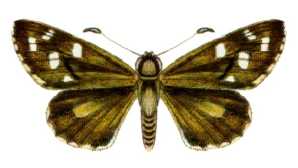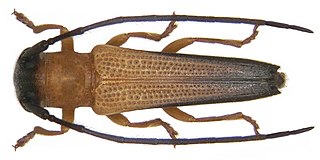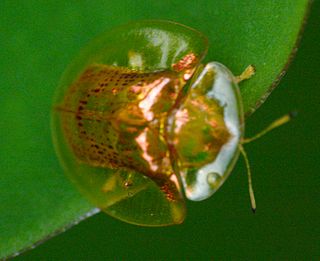
Beetles are insects that form the order Coleoptera, in the superorder Holometabola. Their front pair of wings are hardened into wing-cases, elytra, distinguishing them from most other insects. The Coleoptera, with about 400,000 described species, is the largest of all orders, constituting almost 40% of described insects and 25% of all known animal species; new species are discovered frequently, with estimates suggesting that there are between 0.9 and 2.1 million total species. Found in almost every habitat except the sea and the polar regions, they interact with their ecosystems in several ways: beetles often feed on plants and fungi, break down animal and plant debris, and eat other invertebrates. Some species are serious agricultural pests, such as the Colorado potato beetle, while others such as Coccinellidae eat aphids, scale insects, thrips, and other plant-sucking insects that damage crops. Some others also have unique characteristics, such as the common eastern firefly, which uses a light-emitting organ for mating and communication purposes

Kretzschmaria deusta, commonly known as brittle cinder, is a fungus and plant pathogen found in temperate regions.

Antipodia atralba, the black and white skipper, is a species of butterfly of the family Hesperiidae. It is found in Australia along the coast of Victoria and South Australia.

Hesperilla chrysotricha, also known as the chrysotricha skipper or goldenhaired sedge-skipper, is a species of butterfly in the family Hesperiidae. It is found in the Australian states of Victoria, Tasmania, South Australia and Western Australia.

Hesperilla donnysa, also known as the donnysa skipper or varied sedge skipper, is a species of butterfly in the family Hesperiidae. It is found in the Australian Capital Territory, New South Wales, Queensland, South Australia, Tasmania, Victoria and Western Australia.

Miriquidica deusta is a species of lichen in the family Lecanoraceae. A North American native, it generally grows on siliceous rocks. It belongs to the subdivision Pezizomycotina of the division Ascomycota, within the order Lecanorales. These are found in both general and Estonian herbariums.

Aspidimorpha miliaris is a widespread Asian species of beetles belonging to the family Chrysomelidae. The genus name is frequently misspelled as "Aspidomorpha", due to an unjustified spelling change in 1848.

Aspidimorpha is a large Old World genus of beetles belonging to the family Chrysomelidae and tribe Aspidimorphini. The genus name is frequently misspelled as "Aspidomorpha", due to an unjustified spelling change in 1848.

Aspidimorpha quadrimaculata is a species of beetles belonging to the Chrysomelidae family. This species can be found in East Africa.

Aspidimorpha quinquefasciata is a species of beetles belonging to the family Chrysomelidae.

Nupserha is a genus of longhorn beetles of the subfamily Lamiinae, containing the following species:
Nupserha deusta is a species of beetle in the family Cerambycidae. It was described by Dalman in 1817.

Tritonia deusta is a plant species in the family Iridaceae, indigenous to the Western Cape Province, South Africa.

Umbilicaria deusta, commonly known as peppered rock tripe, is a widely distributed species of saxicolous lichen in the family Umbilicariaceae. It was first described by Carl Linnaeus in his 1753 work Species Plantarum as Lichen polyphyllus. German botanist Johann Christian Gottlob Baumgarten transferred it to the genus Umbilicaria in 1790. The lichen has a dark brown to nearly black thallus that typically measures 1–5 cm (0.4–2.0 in) in diameter. The upper surface is covered with tiny black dots that are granular isidia; the lower surface is the same colour as the upper surface, and is either smooth or covereds with dimples. It grows on exposed boulders and rocky outcrops.

Taumacera is a genus of leaf beetles in the subfamily Galerucinae. It contains about 70 species distributed in the Oriental realm. About 20 African species are also classified in Taumacera, but they may actually belong in a different genus.
Aspidimorpha dorsata, is a species of leaf beetle widely distributed in South Asia and South East Asia.

Aspidimorpha dorsata, commonly known as golden tortoise beetle or furcated tortoise beetle, is a species of leaf beetle widely distributed in Oriental region from Sri Lanka to South China towards Java, and Borneo.
Aspidimorpha lobata, is a species of leaf beetle found in India, Sri Lanka and Bangladesh.
Silana farinosa, commonly known as curry-leaf tortoise beetle, is a species of leaf beetle native to Indo-China, India, Sri Lanka, Thailand and introduced to Peninsular Malaysia.















